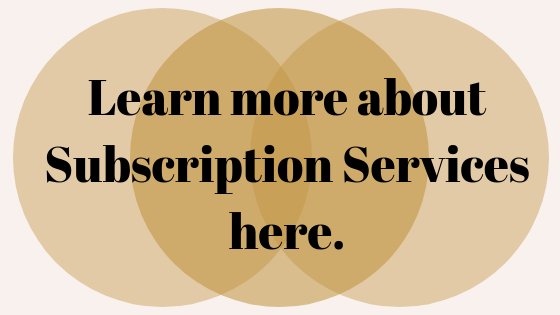5 Reasons Why Anger Must Be Released

“‘Repressed anger will lead to disordered immunity’. In this case, not only are we unable to protect ourselves through a healthy dispensation of anger, we can’t even distinguish what emotion is appropriate and if an outside or internal threat exists.”
Once upon a time, in a not-so-distant past, we began an “Anger Series” here at Of The Wolves, now weREWILD. The period was the close of 2016, and it seemed plausible that anger – at least in this country – knew no bounds. Two years later, some people’s rage may have been transmuted into something a bit more sustained and subdued, but it’s there. It’s fuel for some, and it may be slowly corroding others’ health. Sidestepping any cultural or political occurrences – injustices or inflammatory times – ALL of us experience anger periodically. It is a most common emotion, and it is not something to suppress. Anger itself should never be taboo. Its expression is what should be modulated but not its existence and release.
I have been gripped by the work of Gabor Mate, M.D. lately – his theories and the undeniable links he draws between emotions and disease as well as his work in addiction. Gabor has spent decades as a physician, undeniably working through a very special emotional and somewhat psychological lens with his patients. He is very outspoken about how absent the linkage between emotion and disease is in Western medical teachings. As someone with considerably less client time under my belt and a purely therapeutic lens (no medical training), I have seen first-hand what Gabor speaks of when he draws direct links between suppression of anger – even overly polite and measured personalities – and actual manifestations of disease and dis-ease. I plowed my way through his book “When the Body Says No: Exploring the Stress-Disease Connection” over the holidays and felt compelled to follow the breadcrumbs we dropped back in 2016 into a richer landscape of ANGER resources in 2019.
Following are five reasons why I find anger must be released and why it is essential.
1. Anger is partly how our organism identifies threat or non-threat.
For most of us, the threat of actual predators and the hunting and gathering lifestyle is long gone, but in the animal world these threats loom daily. As Gabor Mate tells us, one of the primary tasks of the immune system is to identify between self and non-self, and for anger to be deployed helpfully and healthily, our entire organism needs to be able to make this distinction. But our psychological capacities can somewhat easily become disjointed and recklessly unaware of where we end and something else begins. As he says, “Repressed anger will lead to disordered immunity”. In this case, not only are we unable to protect ourselves through a healthy dispensation of anger, we can’t even distinguish what emotion is appropriate and if an outside or internal threat exists.
2. Unexpressed anger is trapped within the body.
Repression is the opposite of release. So, naturally, if the anger we experience has no expression it is trapped, roiling through our tissues, our organs, our entire organism. What we know now – and what a select few have always known throughout the ages – is repression of feelings and emotions is actually at the root of many illnesses, physical manifestations. It makes great sense if pondered. Where do intense emotions go if not expressed? We go into greater detail about this in contributor Helena Vissing’s, M.S., PsyD, article “What is Dysregulation and Explaining Its Magnetic Pull”.
3. Those you’re protecting from your anger sense its existence.
This is less about our physiological responses to anger and denying it and more about the observable fields around it. Many people repress anger due to conditioning that started at a young age. Somewhere along the journey of life, it was determined either consciously or unconsciously that anger is not acceptable to demonstrate. As I have worked with clients individually and in groups, I have observed that anger, even when not afforded a seat in the room, is still sitting there anyways. The body knows of the anger’s presence, and others can feel the energy fields as well. This is a powerful example of energy’s omnipresence: we might try to stifle emotions, but they pierce the air around us. If you can work to become conscious of your true emotions you can learn to give them healthy expression. This almost always invites closer relationships and better health.
4. Anger is human.
You are both uniquely you and wholly like the rest of us. Anger is like one of the four food groups; it just IS, so mundane and so every day in its presence. Of course, some of its expressions are unacceptable or even deadly. But experiencing some anger is almost pedestrian, and that does not take away its absolute necessity and distinct footprint for us all. If after taking honest inventory, you find that you do suppress it or shrink from its rise within you, likely somewhere along your childhood or adolescence anger was not confirmed as an acceptable emotion. Deep programming takes DE-programming, but it is possible. I find starting with curiosity about what triggered the anger, as it’s happening in real time, invites some possible new behaviors. The anger is allowed to stay through your inquiry around what it is and how it wants out.
5. Denial and suppression can be deadly.
It is with this truth, that I simply suggest you read “When the Body Says No: Exploring the Stress-Disease Connection”. I suggest this because within its contents are almost every personality profile and their possible linkages to disease. You will undeniably see some of yourself in some of the patients’ stories; however, I caution to enter into reading without allowing it to scare you. I saw so many of my symptoms and some similar childhood stories in his ill patients, and I took this as an opportunity to deepen my emotional practices.








